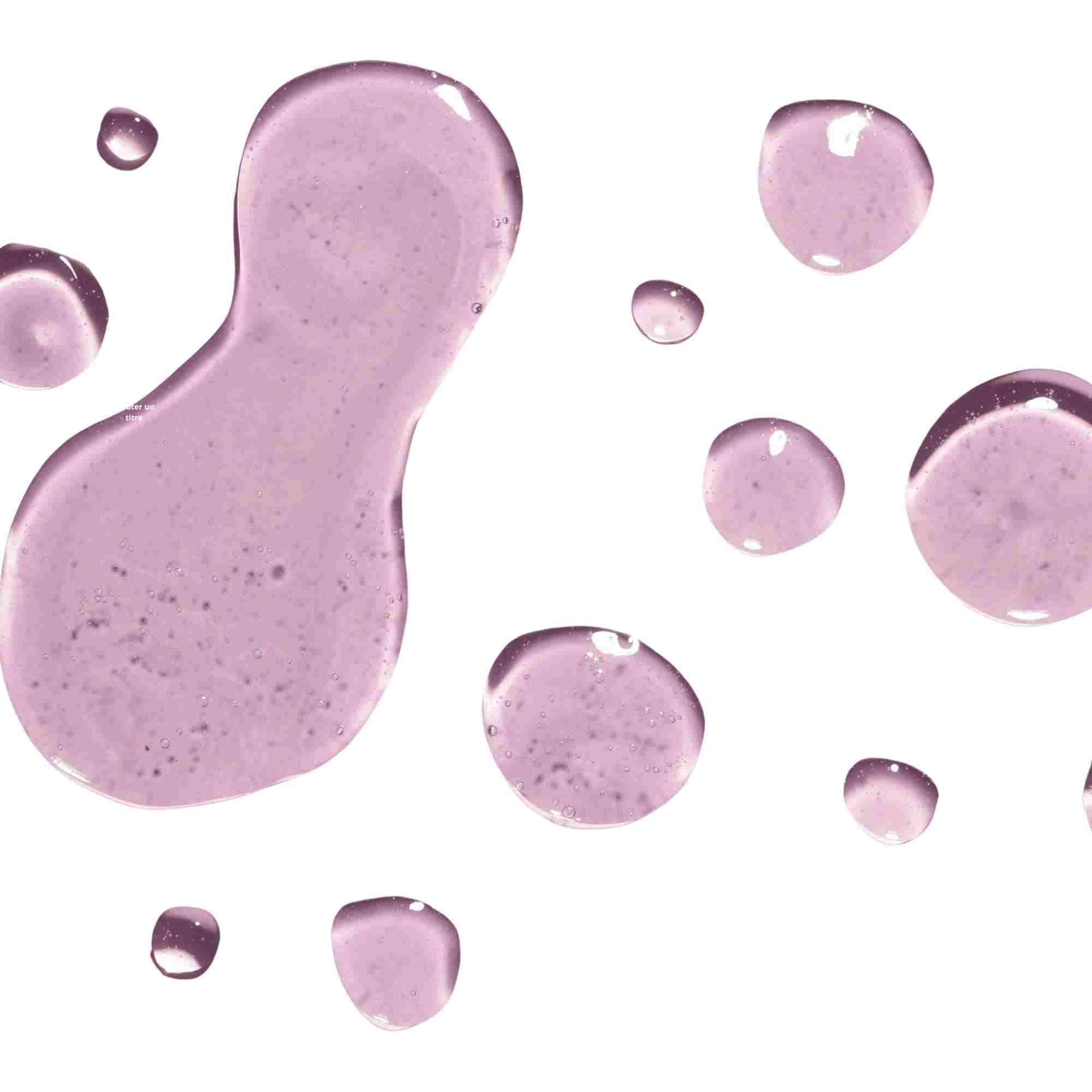Definition of hyaluronic acid
Hyaluronic acid, also known under the name of hyaluronan, is a glycosaminoglycan naturally contained in conjunctive tissues of the human body, particularly in the skin, the eyes and the articulations. It is distinguished by its exceptional ability to retain water, which makes it a key ingredient in skincare and haircare products.
Actions and benefits of hyaluronic acid
Property of hyaluronic acid: intense moisturization
Hyaluronic acid can retain up to 1,000 times its weight in water, making it a powerful moisturizing agent. It helps maintaining more hydrated skin and hair, thus giving them a smoother and softer appearance.
Property of hyaluronic acid: reduction of wrinkles and fine lines
By deepky hydrating the skin, hyaluronic acid contributes in filling wrinkles and fine lines, thus giving to the skin a younger and more bouncy appearance. It also stimulates collagen production, essential for the firmness and elasticity of the skin.
Property of hyaluronic acid: healing and regeneration
Hyaluronic acid favors skin cells regeneration and accelerates wounds healing, htanks to its anti-inflammatory and repairing properties. It is often used to treat light burns, cuts and skin irritations.
Property of hyaluronic acid: antioxidant protection
It helps protecting the skin against damages cause by free radicals and environmental agressions, thanks to its antioxidant properties.
Property of hyaluronic acid: hair care
In hair cares, hyaluronic acid helpes hydrating the sclap and hair, thus reducing dryness and frizz. It also reinforces the hair fibers, improving their elasticity and brittleness.
Clinical and scientific studies on hyaluronic acid
Numerous studies have confirmed the benefits of hyaluronic acid for the skin. For example, a clinical study published in the "Journal of Cosmetic Dermatology" demonstrated that a topical application of hyaluronic acid could significantly improve skin hydration and reduce wrinkles in only eight weeks. Another research, published in the "International Journal of Biological Macromolecules", highlighted the anti-inflammatory and healing properties of hyaluronic acid.
Sourcing of hyaluronic acid
Hyaluronic acid used in cosmetic products is generally obtained by biofermentation of certain bacteria. This process enables to produce pur and efficient hyluronic acid, without using animal resoources. Hyaluronic acid can be formulated under different molecular forms, including high and low molecular weight, to offer specific benefits in terms of hydration and skin penetration.
Anecdotes on hyaluronic acid
Hyaluronic acid was discovered in 1934 by researchers Karl Meyer and John Palmer, who isolated it for the first time from the vitreous humour of a steer. Since then, it has become an major work in the cosmetics industry thanks to its exceptional moisturizing and anti-aging properties.
Hyaluronic acid in our products
In the Laboratoires SILKBIOTIC, we love the benefits of hyaluronic acid. This is why we integrated it in several of our products for its moisturizing and anti-aging properties. Indeed, you will find this precious ingredient in our Repair Intensive Cream and our Hydra Protect Gel Cream, guaranteeing visible and long-lasting results.
Sources :
- Pavicic T, et al. Efficacy of cream-based novel formulations of hyaluronic acid of different molecular weights in anti-wrinkle treatment. Journal of Cosmetic Dermatology (2011).
- Chen, W. Y., & Abatangelo, G. Functions of hyaluronan in wound repair. Wound Repair and Regeneration (1999).




